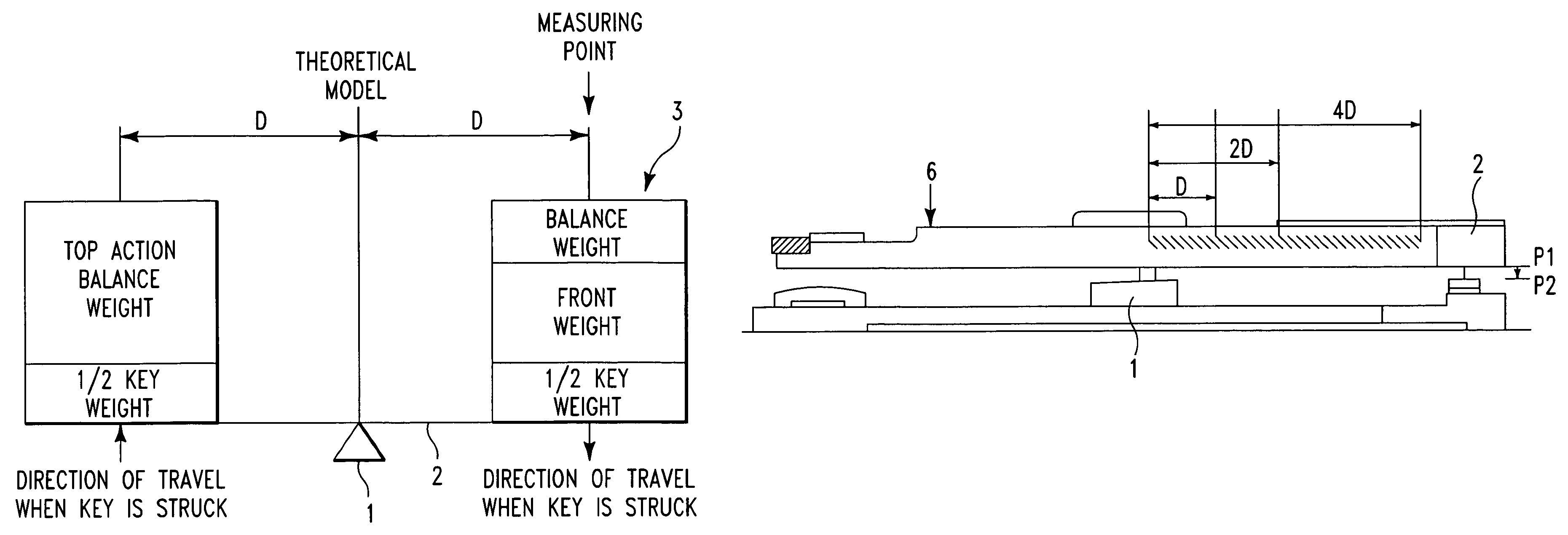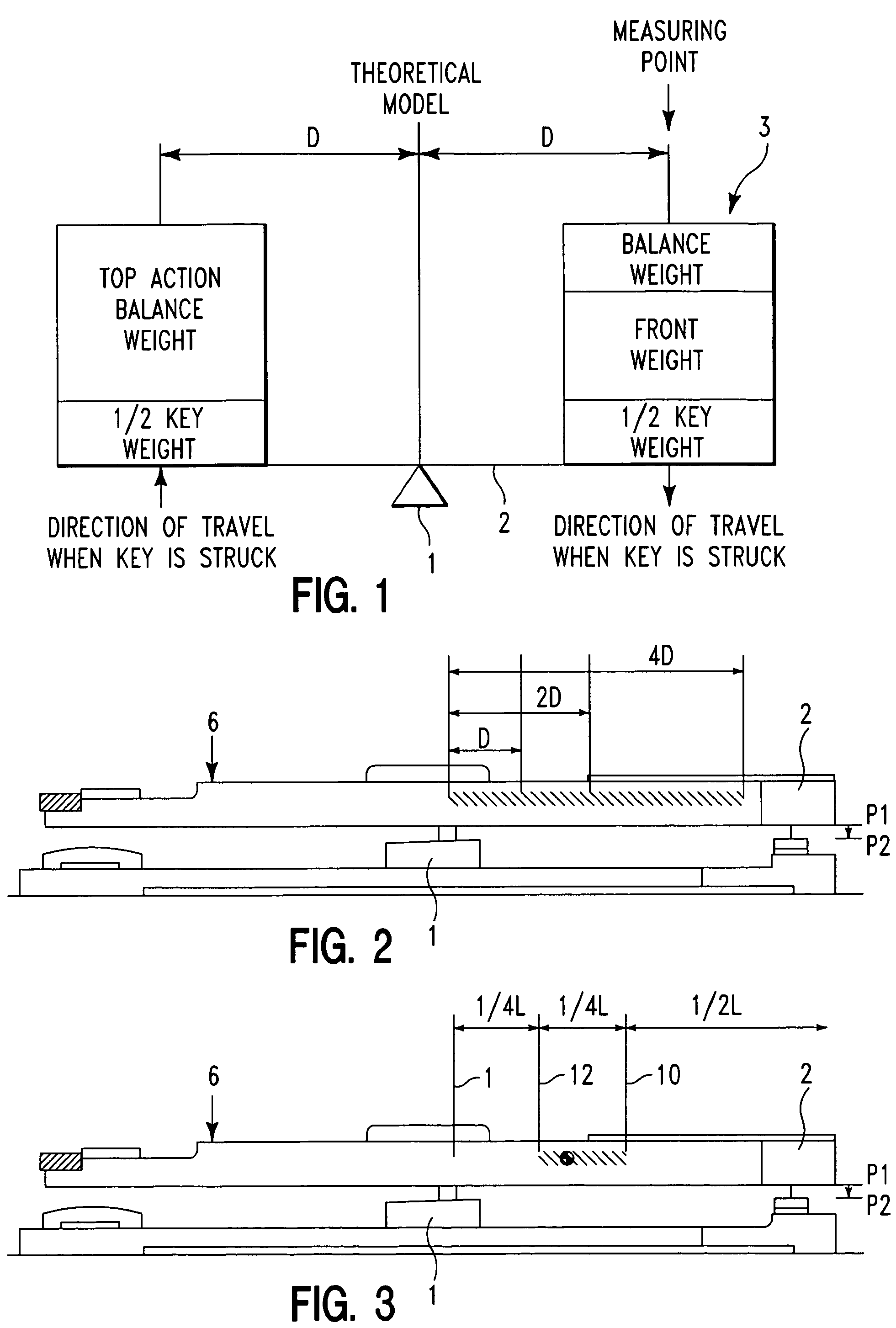Piano key assembly
a piano key and assembly technology, applied in instruments, distance measurement, surveying and navigation, etc., can solve the problems of affecting the dynamic performance of the instrument, not providing sufficient static balance weight for the piano key, and affecting the inertia of the instrument, so as to reduce the amount of force required to accelerate each key, improve the control effect, and accelerate the effect of action
- Summary
- Abstract
- Description
- Claims
- Application Information
AI Technical Summary
Benefits of technology
Problems solved by technology
Method used
Image
Examples
Embodiment Construction
[0015]The preferred embodiments of the present invention will now be described with reference to FIGS. 1–3 of the drawings. Identical elements in the various figures are designated with the same reference numerals.
[0016]The present invention provides an improvement to the prior art because it takes into consideration the inertia of the lead weights and the amount of force required in the dynamic operation of the key.
[0017]FIG. 1 represents the weights in a single piano keystick as taught by Stanwood 1. Each keystick is a simple balance beam which consists of a keystick 2, a pivot point 1 and a hammer assembly and wippen which apply a force to the keystick 2. Force applied to the one end of the piano key, by the piano player, causes downward movement of the ivory end of the keystick. The downward force creates movement which translates to an upward force applied to the wippen and hammer assembly by way of the capstan screw that projects upward from the keystick. When depressing a key...
PUM
 Login to View More
Login to View More Abstract
Description
Claims
Application Information
 Login to View More
Login to View More - R&D
- Intellectual Property
- Life Sciences
- Materials
- Tech Scout
- Unparalleled Data Quality
- Higher Quality Content
- 60% Fewer Hallucinations
Browse by: Latest US Patents, China's latest patents, Technical Efficacy Thesaurus, Application Domain, Technology Topic, Popular Technical Reports.
© 2025 PatSnap. All rights reserved.Legal|Privacy policy|Modern Slavery Act Transparency Statement|Sitemap|About US| Contact US: help@patsnap.com


